When threatened, young chicks may be sheltered between the wings and carried to safety. They become independent of their father when they are about ten weeks old.
20- Common
Kingfisher- This sparrow-sized bird has the typical short-tailed, large-headed kingfisher profile; it has blue upperparts, orange underparts and a long bill. It feeds mainly on fish, caught by diving, and has special visual adaptations to enable it to see prey under water. The glossy white eggs are laid in a nest at the end of a burrow in a riverbank.
They live singly and only pair during breeding season.
For food requirement they define their territories and fight if intrusion occurs, drowning the competitor by catching the beak.
It’s a bird that takes your breath away every time — streaking like an electric tracer into the water and emerging happy-eyed with a wriggling silver fish.
The common kingfisher hunts from a perch 1–2 m (3–7 ft) above the water, on a branch, post or riverbank, bill pointing down as it searches for prey. It bobs its head when food is detected to gauge the distance and plunges steeply down to seize its prey usually no deeper than 25 cm (10 in) below the surface. The wings are opened underwater and the open eyes are protected by the transparent third eyelid. The bird rises beak-first from the surface and flies back to its perch. At the perch the fish is adjusted until it is held near its tail and beaten against the perch several times. Once dead, the fish is positioned lengthways and swallowed head-first. A few times each day, a small greyish pellet of fish bones and other indigestible remains is regurgitated.
20- River Tern with a catch. In the background one can see the snakebird swallowing a fish.
The River tern is a slender bird, about the size of a pigeon, with grey upper parts, black cap on the head, yellow beak, long pointed wings, a deeply-forked tail and short, yellow stubby legs. Both the sexes look alike. It spends a great portion of its time fishing. It predominantly feeds on fish, small crustaceans and insects. More likely to be sighted in flight than on the ground.
This species has been uplisted to Vulnerable on the basis that increasing human disturbance, dam construction, waterbody management, and predation are causing a rapid population decline. Whilst the situation is more concerning in Southeast Asia despite its marginal occurrence here, localised declines also continue to occur across India, of which currently holds the majority of the population.


21- Eurasian Hoopee- Utterly unmistakable orange bird with a zebra-striped wings, a Chinese fan of a crest (usually held closed, but often raised just after landing), and a rapier of a bill.
In what was long thought to be a defensive posture, hoopoes sunbathe by spreading out their wings and tail low against the ground and tilting their head up; they often fold their wings and preen halfway through. They also enjoy taking dust and sand baths.
Hoopoes are monogamous, although the pair bond apparently only lasts for a single season. They are also territorial. It is Israel's National Bird.
They’re big fighters, too, especially the boys. While fighting over property during the breeding season (usually between March and June), they will face each other, crests flared, bills first pointing downwards and then directly at each other and begin jabbing. It can get dangerous and they have been known to blind one another in such duels. The property the males fight over are usually a hollow or slit in a tree trunk or a hole in a stone wall — which is what they call home. They will line this skimpily with grass, leaves, feathers and rubbish and the chosen one will settle down here to raise a family. The entrance is made even narrower and throughout the incubation period — madam’s job entirely — her partner will, rather in the manner of hornbills, feed her conscientiously. Both parents feed the babies.
Their in-house hygiene is appalling. The lady of the house, alas, lets excreta, food debris fester in her home and it stinks the place out. Worse, at this time, her preen-gland (the uropygial gland) swells up and produces a thick, brown goo that is extremely foul smelling. This guck, she applies all over herself and to her eggs, too. It keeps predators (there are a couple of raptors which are partial to hoopoes) at bay. But this evil-smelling stuff is good for her and her babies-to-be. It has substances which make her feathers flexible and waterproof. Also, it was recently discovered it plays host to a good bacterium, which is the “natural predator” of a bad bacterium, which is a keratin destroyer — the stuff feathers are made out of. The goo also gets through the pores of the eggs and provides a shield for the babies inside. But, be warned: if you try funny stuff with hoopoe babies (such as remove them from their nest) they will turn around and squirt you with a face-full of highly stinky liquid faeces — an experience you will not relish.



22- Woolly Necked Stork - The woolly-necked stork is a medium-sized stork. The iris is deep crimson or wine-red. The stork is glistening black overall with a black "skull cap", a downy white neck which gives it its name.
They are attracted to fires in grasslands and crop fields where they capture insects trying to escape the fire.
The species was elevated from "Near-threatened" to "Vulnerable" in 2014. It was, however, down listed to "Near-threatened" in 2019. The status of woolly-necked storks is tied to Indian and Nepali farmers – an unusual situation in a world where agriculture has often been the villain of conservation stories.




23- Saras Crane- The sarus crane is easily distinguished from other cranes in the region by its overall grey colour and the contrasting red head and upper neck. They forage on marshes and shallow wetlands for roots, tubers, insects, crustaceans, and small vertebrate prey. Like other cranes, they form long-lasting pair bonds and maintain territories within which they perform territorial and courtship displays that include loud trumpeting, leaps, and dance-like movements. In India, they are considered symbols of marital fidelity, believed to mate for life and pine the loss of their mates, even to the point of starving to death. The sarus crane is classified as vulnerable on the IUCN Red List.
The species is venerated in India, and legend has it that the poet Valmiki cursed a hunter for killing a sarus crane and was then inspired to write the epic Ramayana. They are a symbol of marital virtue and in parts of Gujarat, taking a newlywed couple to see a pair of sarus cranes is customary. The Indian state of Uttar Pradesh has declared the sarus crane as its official state bird.
24- Glossy Ibis - This is the most widespread ibis species. Though generally suspected to be a migratory species in India, the glossy ibis is resident in western India.
When not nesting, flocks of over 100 individuals may occur on migration. The young can leave the nest after about 7 days, but the parents continue to feed them for another 6 or 7 weeks.
A glossy Ibis was once rescued from PM's house due to heat exhaustion and Wasim Akram, Manager Wildlife SOS Special Projects said, “At times like this we must remain compassionate and consider the welfare of birds and animals that share our surroundings. We can do our bit by putting out earthen water bowls and food in our balconies, window sills, outside residential complexes and shops. Creating green cover by planting more trees and keeping potted plants also provide reprieve to these animals.”




25- Griffon Vulture or Himalayan Vulture- Massive tricolored vulture with whitish head and neck, pale brown body, and contrasting dark flight feathers. Juveniles similar but with a pale brown rather than white neck ruff. Nests in colonies on cliff ledges; often seen in loose flocks soaring over valleys and mountainsides but always in search of updrafts and thermals. Still the commonest vulture over much of its breeding range. Some populations are resident while others are highly migratory. They feed on old carcasses sometimes waiting a couple of days near a dead animal.
The IUCN has listed the species as Near Threatened. One major threat to the species is a nonsteroidal anti-inflammatory drug known as diclofenac. Their population decline is generally caused by the consumption of carcasses exposed to diclofenac.
We found them near a carcass and they flew away and sat on nearby trees on seeing us.
Like other vultures, the Himalayan griffon vulture is considered one of the most dangerous birds of the Himalayas. Along with long wings and a strong head, these birds possess heavy claws and sharp bills. They also attack in small colonies and the strike of these birds can cause several damages to humans and anima
26- Spotted Eagle- The greater spotted eagle occasionally called the spotted eagle, is a large bird of prey. Greater spotted eagles primarily live off of small mammals, principally rodents and quite often prefer those habituated to wetland habitat, frogs and a variety of birds, often vulnerable water birds, with reptiles and insects taken more infrequently. The species is dimorphic or even polymorphic. As for pale morph adults (sometimes referred to as fulvescens), the plumage is rather bicolored, with the tail, flight feathers and greater wing coverts all still blackish but the body and the rest of wing coverts appear light rufous yellow or pale golden buff (and can become creamy when worn). The fairly buffy colour of the fulvescens morph is contrasted usually with diffuse darker colouring around the eyes, on the leading edges of wings and more rarely and sparsely about the chest. Greater spotted eagles are almost entirely migratory birds. However, it is not usually considered a long-distance migrant compared to other birds of prey.



27 - Black Kite -
The black kite is a medium-sized bird of prey.
Black kites are opportunistic hunters and are more likely to scavenge. They spend much time soaring and gliding in thermals in search of food. Their angled wing and distinctive forked tail make them easy to identify. They are also vociferous with a shrill whinnying call. Both the male and female take part in nest building, incubation and care of chicks. Siblings show aggression to each other and often the weaker chick may be killed, but parent birds were found to preferentially feed the smaller chicks in experimentally altered nests.
28- Black Winged Kite - This was the first bird I sighted on entering Keoladeo National Park. Extreme cold weather and 9 AM in the morning and it was sleeping but somehow got up and noticed us. It then tried to get it's profile clicked from all angles and made sure that we got away before sleeping again.
It has owl like forward facing eyes with red irises. They are thought to have been adapted for living in savanna habitats where seasonal rodent population peaks occur. Such food resources are also favoured by the owls.
29- Long Tailed Shrike- The long-tailed shrike or rufous-backed shrike has a long and narrow black tail, have a black mask and forehead, rufous rump and flanks and a small white patch on the shoulder. This bird has a characteristic upright "shrike" attitude when perched on a bush, from which it glides down at an angle to take lizards, large insects, small birds and rodents.
Both parents incubate the eggs and feed the chicks.
Their nests are sometimes parasitized by cuckoos such as the common cuckoo (Dehra Dun), common hawk-cuckoo, Jacobin cuckoo and the Asian koel in Bangladesh.
30- Bay-backed Shrike-
Brightly-coloured small shrike, reminiscent of Long-tailed Shrike in overall coloration. Black mask, rufous flanks and back, clean white throat, and small size make it distinctive within its range. It has a white patch on it's wings. Prefers open areas, often in dry regions, with scattered vegetation.
31- Plain Prinia or Jungle Prinia- A common prinia has a drab gray-brown plumage that varies in tone across its range. It has a pale, wide eyebrow and the long tail that appears as if it is loosely attached to the body. Breeding birds have a black bill and a shorter tail.
32- Booted Warbler- Small, recalling a beige chiffchaff . Rather nondescript: gray brown above, paler below, with a short, dark-tipped bill and conspicuous pale eyebrow. Pot-bellied with short wings and a square-tipped tail.
33- Black drongo-
One of the pictures shows a drongo with no tail and the guide explained that it must of lost it as a result of a fight with a predator.
One of the picture shows the black drongo hovering to catch a fish.
The black drongo is a small Asian passerine bird of the drongo family. The species is known for its aggressive behaviour towards much larger birds, such as crows, never hesitating to dive-bomb any bird of prey that invades its territory. This behaviour earns it the informal name of king crow. Smaller birds often nest in the well-guarded vicinity of a nesting black drongo.
They associate with common mynas, cattle egrets and other birds that share a similar diet and habitat. Drongos benefit from this association and are more successful in their foraging. There is only partial overlap in the insect prey sought by mynas and drongos although in rare instances the drongos may rob prey from mynas. It is said that they imitate the call of the shikra so as to put mynas to flight and then to steal prey.
They are so aggressive that they may sometimes land on large birds of prey and peck them when mobbing.
Play behaviour has been observed with birds dropping a leaf in the air and catching it in mid-air and these may possibly help young birds acquire aerobatic skills.
34- The Rufous Treepie - It is a treepie, native to the Indian Subcontinent and adjoining parts of Southeast Asia. It is a member of the crow family. It is long tailed and has loud musical calls making it very conspicuous. It is found commonly in open scrub, agricultural areas, forests as well as urban gardens. Like other corvids it is very adaptable, omnivorous and opportunistic in feeding.
They are known to be a cleaning symbiont of deer, feeding on ectoparasites of sambar which permit them to perch and position themselves to invite the birds to examine specific parts.
They have strong organisation and community building traits (partner and group bonds), which keeps them in groups and helps them join mixed hunting parties of birds.
The local name for the Rufous Treepie is the “ taka chor ”. Literally translated, this means, “coin stealer”. This name for the treepie comes on account of its habit, like many other corvids, to seek out and steal shiny items such as coins, jewellery and other similar objects. They collect these objects, and often line them up in their nests, possibly to attract the female treepie. The next time you end up losing a shiny object, do make sure that a “ taka chor ” is not hanging about near your home!
35- Indian
Golden Oriole- It was a long wait to sight this bird. Sighted it on the last day ie 21st Jan 2022. After spotting it did make me run about quite a bit to get a perfect shot as it tried to hide and get out of sight. Once located it sat still for various profiles. The Indian golden oriole is a species of oriole found in the Indian subcontinent and Central Asia. Adults can be told apart from the Eurasian golden oriole by the black of the eye stripe extending behind the eye.
36- Ibis - The black-headed ibis, also known as the Oriental white ibis, Indian white ibis, and black-necked ibis, is a species of wading bird of the ibis family which breeds in the South and Southeast Asia from India to the west and as far east as Japan.
It is the only native ibis species in its range that has an overall white plumage with a black neck and head. The down-curved beak and legs are also black. Though often referred to as a wetland species, the black-headed ibis forages in a range of natural and man-made habitats. This species of ibis nests only during the rainy season.
Sexes are identical but juveniles are identifiable from adults in having greyish feathering on the neck and speckled brown-grey feathering on the wings and back. Like storks and spoonbills, it lacks a true voice-producing mechanism and is silent except for ventriloquistic grunts uttered by pairs at the nest.
37- Black Crowned Night Heron - Stocky heron with neck usually tucked in. Adults overall pale greyish with black cap and back. Red eyes. Juveniles noticeably are different and have dull grey-brown plumage on their heads, wings, and backs, with numerous pale tear shaped spots. Their underparts are paler and streaked with brown. The young birds have orange eyes and duller yellowish-green legs. Often crouched under overhanging branches during the day, it feeds
nocturnally for fish, frogs and other prey. It has been observed to engage in bait fishing, where they lure or distract fish by tossing both edible or inedible floating objects into the water within their striking range.
38 - Asian Openbill- The Asian openbill or Asian openbill stork is a large wading bird in the stork family. This distinctive stork is found mainly in the Indian subcontinent and Southeast Asia. A relatively small stork species with a greyish to white body and black wings and tail with a hint of gloss. The Asian Openbill gets its name from a distinctive gap in the dull greyish yellow bill. Note the pinkish legs. Asian Openbills inhabit wetland habitats including shallow marshes, flooded agricultural fields, and lakes.
It has been observed to engage in bait fishing, where they lure or distract fish by tossing both edible or inedible floating objects into the water within their striking range.
39- Asian Pied Starling- This sharply attired black-and-white starling has a pointed yellowish bill with an orange base. Note the bare, deep orange patch around its eye that contrasts with its white cheek. Seen in loose flocks close to human habitation feeding on human refuse. Garbage dumps, damp grazing lands, and well watered parks are its favoured haunts. Noisy with a variety of calls that includes mimicked sounds of other birds.
The ability of these mynas to mimic human voices made them popular as cage-birds. The Sema Nagas will not eat this bird as they believe it is the reincarnation of a human. They are considered to be generally beneficial because they eat many insects.
40- Brahminy Starling- This fearless bird is cute and friendly. It sat on my camera and enjoyed having meal with me on the table in the canteen at Bharatpur Bird Sanctuary along with the Jungle babbler. In groups they were all around feeding on whatever spilled over on to the ground and table as people stopped to have their lunch.
A small fawn-coloured starling with a long wispy crest that usually lies limp over the back of its head, but the feathers on its cheek and upper breast stand up and away from its cheek. Its upperparts are gray and the dark tail is tipped in white. Note the yellow bill with a blue base. Often seen in small family groups, feeding on fruits and nectar as well as insects on the ground or in the trees. They have a wide repertoire of calls and are also given to mimicking other species.
It is so called because of this species' fondness for perching on buildings and temple pagodas in southern India.
The male selects the nest, sometimes having to compete with other hole-nesters such as barbets and sparrows. The young are fed with insects in the early stages and grains in the later stages. After feeding the parents wait for the young to eject faecal pellets which they carefully remove and drop about 20 metres (66 ft) away from the nest.
41 - The black-necked stork is a tall long-necked wading bird in the stork family. Adult birds of both sexes have a heavy bill and are patterned in white and irridescent blacks, but the sexes differ in the colour of the iris with females sporting yellow irises and males having dark-coloured irises. It is one of the few storks that is strongly territorial when feeding and breeding.
The Mir Shikars, traditional bird hunters of Bihar, India had a ritual practice that required a young man to capture a black-necked stork "Loha Sarang" alive before he could marry. A procession would locate a bird and the bridegroom-to-be would try to catch the bird with a limed stick. The cornered bird was a ferocious adversary. The ritual was stopped in the 1920s after a young man was killed in the process. Young birds have been known to be taken from the nest for meat in Assam.
42- Spoonbill- Will now be sharing a few recent pics of Spoonbills taken in Keoladeo National Park Bharatpur in January 2022. The last one of the series was taken in Oct 2014 at the same place and shows the little ones after hatching being cared by it's parent.
Spoonbills are tall white water-birds with long spatulate black bills and long black legs. In flight they fly with necks and legs extended. In the water they feed with elegant sideward sweeps of their bill. In the breeding season adults show some yellow on their breast and bill tip.
Breeding is normally in single species colonies or in small single species groups or amidst mixed-species colonies of other water-birds such as herons, egrets and cormorants.
43 - The ruddy shelduck- It is known in India as the Brahminy duck. It has orange-brown body plumage with a paler head, while the tail and the flight feathers in the wings are black, contrasting with the white wing-coverts. The female is similar but has a rather pale, whitish head and neck and lacks the black collar. It is a migratory bird, wintering in the Indian subcontinent and breeding in south-eastern Europe and central Asia. It has a loud honking call.
The interesting part is that male and female form a lasting pair bond.
The ruddy shelduck is mainly a nocturnal bird. It is omnivorous and feeds on grasses, the young shoots of plants, grains and water plants as well as both aquatic and terrestrial invertebrates.
Buddhists regard the ruddy shelduck as sacred bird .



44- Graylag goose- Rather bulky and overall brownish grey with a big pinkish-orange bill and pinkish legs. Greylag geese travel to their northerly breeding grounds in spring, nesting on moorlands, in marshes, around lakes and on coastal islands. They normally mate for life.
Greylag geese are largely herbivorous and feed chiefly on grasses.
Young greylags stay with their parents as a family group, migrating with them in a larger flock, and only dispersing when the adults drive them away from their newly established breeding territory the following year.
The greylag was once revered across Eurasia. In Ancient Greece and Rome, they were associated with the goddess of love, Aphrodite, and goose fat was used as an aphrodisiac. Since they were sacred birds, they were kept on Rome's Capitoline Hill, from where they raised the alarm when the Gauls attacked in 390 BC.
45- The Eurasian wryneck or northern wryneck- Was spotted by our guide and he was so exited to spot this bird for this is a bird rarely sighted and is a Migratory bird. The Eurasian wryneck is the only European woodpecker to undertake long-distance migrations.
These birds get their English name from their ability to turn their heads through almost 180 degrees. When disturbed at the nest, they use this snake-like head twisting and hissing as a threat display. This odd behaviour led to their use in witchcraft, hence to put a "jinx" on someone.
The Eurasian wryneck sometimes forms small groups during migration in its winter quarters but in the summer it is usually found in pairs. It characteristically holds its head high with its beak pointing slightly upwards. A mutual display that occurs at any time of the year involves two birds perched facing each other with their heads far back and beaks wide open, bobbing their heads up and down. Sometimes the head is allowed to slump sideways and hang limply. On other occasions, when excited, the head is shaken and twisted about violently. When disturbed on the nest or held in the hand, the neck contorts and twists in all directions. This interesting bird sometimes feigns death and hangs limply with eyes closed.
The diet of the Eurasian wryneck consists chiefly of ants but beetles and their larvae, moths, spiders and woodlice are also eaten. It does not make holes in bark with its beak but picks up prey with a rapid extension and retraction of its tongue.
46 - Bluethroat
- It is a migratory insectivorous species breeding in Europe with a foothold in western Alaska. It winters in north Africa and the Indian subcontinent.
The male has an iridescent blue bib edged below with successive black, white and rust coloured borders. Females of all subspecies usually have just a blackish crescent on an otherwise cream throat and breast.
In India it is called Neelkanthi In Hindi and Gujarati, Neelgola fidda in Bengali, Shankar in Marathi.
But this Neel Kanthi is different from the Indian Roller which is known as Neel Kanth.
Like Neel Kanth, Neel Kanthi too has a link with Indian mythology which goes back to the Mahabharat era. During their exile, the Pandavas were hiding in a dense forest. One spring afternoon, Bheema, the strongest one of five brothers, was resting after his lunch. A snake bit him behind his ear and Bheema woke up feeling the pain. He saw the snake disappearing in nearby bushes. Suddenly, Bheema started feeling dizzy because of the snake venom and started losing his consciousness. According to the legend, a little sparrow with a red bib came and poked her pointed beak in the wound caused by the snake bite and began to suck out the venom.
Bhima was amazed at the kindness of the small bird trying so hard to save him. He was humbled that a tiny creature tried to save a mighty Pandava warrior. Suddenly the red patch at the bird’s throat turned blue and Bheema was horrified that the little bird which helped him was dying. Suddenly, a group of bulbuls hopped over the little bird and poured nectar into the throat of the dying sparrow. The nectar washed away the venom and the little sparrow strength revived slowly. The sparrow was able to stand and hop as usual. Bhima noticed that the bird was no longer red throated but had turned blue.
Bheema named the bird as Nil Kanthi as it had a blue throat like Mahadev. Hence the blue-throated sparrow is called Neel Kanth - Mahadev’s bird.
The female was shot in Keoladeo National Park Bharatpur. The other two shots of male Bluethroat was shot in front of my house in Moradabad.



47 - The Asian openbill or Asian openbill stork is a large wading bird. This distinctive stork is found mainly in the Indian subcontinent and Southeast Asia. It is greyish or white with glossy black wings and tail and the adults have a gap between the arched upper mandible and recurved lower mandible. Young birds are born without this gap which is thought to be an adaptation that aids in the handling of snails, their main prey. Although resident within their range, they make long distance movements in response to weather and food availability.
48 - Pied Kingfisher- The pied kingfisher is a species of water kingfisher widely distributed across Africa and Asia. Its black and white plumage and crest, as well as its habit of hovering over clear lakes and rivers before diving for fish, make it distinctive. Males have a double band across the breast, while females have a single gorget that is often broken in the middle. Both can easily be distinguished in the pictures that I share here. They are usually found in pairs or small family groups. When perched, they often bob their head and flick up their tail.


49- Common Moorhen/ Eurasian Moorhen - The common moorhen also known as the waterhen or swamp chicken, is a bird species in the rail family. The birds are territorial during breeding season, and will fight with other members of their species, as well as other water birds such as ducks, to drive them out of their territory. Both parents incubate and feed the young. When threatened, the young may cling to the parents' body, after which the adult birds fly away to safety, carrying their offspring with them.
50 - Bar Headed Goose- If you find yourself at Himalayan heights without any particular physical trauma, either you are among the strongest climbers in the world or you are a bar-headed goose. To make everything exceptional, there is the ability of this animal to overcome insane differences in height in just a few hours, with an adaptation unknown to other living beings. Their migration journey requires them to cross some of the highest peaks in the Himalayas, reaching over 7,200 meters above sea level, where oxygen is more rarefied and temperatures are very low.The bar-headed goose breeds in Central Asia in colonies of thousands near mountain lakes and winters in South Asia, as far south as peninsular India. It lays three to eight eggs at a time in a ground nest. It is known for the extreme altitudes it reaches when migrating across the Himalayas.
The chicks of bar-headed goose are very attached to the parents, who both collaborate in their care, and will become completely independent only after many months.
51 - The lesser whistling duck - It is also known as Indian whistling duck or lesser whistling teal. They are nocturnal feeders and often rest during the day .
The first photograph has a duck observing me with my camera as the rest of them sleep but soon it too decided to sleep tucking it's head in, sensing no danger.
Young birds may sometimes be carried on the back of the parents.
It was such a good camouflage that it was difficult to spot them if one was not vigilant.
52 - The Northern Shoveler- This species is unmistakable in the northern hemisphere due to its large spatulate bill. The breeding drake has an iridescent dark green head.
The female is a drab mottled brown like other dabblers, with plumage much like a female mallard, but easily distinguished by the long broad bill.
Northern shovelers feed by dabbling for plant food, often by swinging its bill from side to side and using the bill to strain food from the water. They use their highly specialized bill (from which their name is derived) to forage for aquatic invertebrates. Their wide-flat bill is equipped with well-developed lamellae – small, comb-like structures on the edge of the bill that act like sieves, allowing the birds to skim crustaceans and plankton from the water's surface.
The drakes are very territorial during breeding season and will defend their territory and partners from competing males. Drakes also engage in elaborate courtship behaviours, both on the water and in the air; it is not uncommon for a dozen or more males to pursue a single hen.
Those wintering in the Indian Subcontinent make the taxing journey over the Himalayas, often taking a break in wetlands just south of the Himalaya before continuing further south to warmer regions.
53 - The gadwall- This dabbling duck is strongly migratory, and winters farther south than its breeding range. It feeds by dabbling for plant food with head submerged. They can also dive underwater for food, more proficiently than other dabbling ducks, and may also steal food from diving birds such as coots.
54 - The ferruginous duck- It is a medium-sized migratory duck species that is also known by the name common white-eye, ferruginous pochard, and white-eyed pochard.
These ducks are given the name ferruginous because it resembles the iron rust by its colour. The adult male is a rich chestnut colour with a darker back and a yellow eye. The female is similar but duller, and with a dark eye.
These birds feed mainly by diving or dabbling. Watching them dabble is so interesting when they rotate at 90 degrees and dip their beak and half body inside water with their tail end and half body outside water. They eat aquatic plants with some mollusks, aquatic insects and small fish. They often feed at night, and will upend (dabble) for food.
Feeding ducks and geese makes them dependent on humans for food, which can result in starvation and possibly death when the feeding stops. If one decides to feed them, one should limit the quantity to make sure that they maintain their natural ability to forage for food themselves - providing, of course, that natural food sources are available.
55- Northern Pintail- Is a dabbling, elegant, slender duck with long neck and tail. Males have a chocolate brown head with a white slash coming up the neck, white breast, and mostly grey body. Females are patterned light brown. Forages in wetlands and in fields on agricultural waste grains.
Pintails are named for their elongated central tail feathers, which constitute one-fourth of the drake's body length.
56 - The Indian Spot Billed Duck- The Indian spot-billed duck is a large dabbling duck
that is a non-migratory breeding duck throughout freshwater wetlands in the Indian subcontinent. The name is derived from the red spot at the base of the bill that is found in the mainland Indian population. They are seen isolated from other species and usually in pairs or small groups.
They were hunted extensively in British India, noted for their excellent taste.
57 - The Eurasian coot- It is also known as the common coot, or Australian coot. It has a slaty-black body, a glossy black head and a white bill with a white frontal shield.
It is an aggressive species, and strongly territorial during the breeding season, and both parents are involved in territorial defence. During the non-breeding season they may form large flocks, possibly related to predator avoidance.
The young are brooded by the female for the first three to four days during which time food is brought by the male. The male also builds one or more platforms that is used for roosting and brooding the chicks. On leaving the nest, the brood is sometimes split up with each parent taking care of a separate group.
Coots can be very brutal to their own young under pressure such as the lack of food. They will bite young that are begging for food and repeatedly do this until it stops begging. If the begging continues, they may bite so hard that the chick is killed.
58 - Common or Eurasian Teal - The Eurasian teal is a common and widespread duck. It is a native of Europe. The ones that migrate breed in Russia. When the weather turns cold and food becomes scarce, they fly over the Himalayas in the East and the Caucasus in the West to spend their ‘winter vacations’ on the Mediterranean coast, India, coastal China and the French Indo-China region.
Eurasian teal are highly gregarious ducks outside the breeding season and can form large flocks. Diurnal throughout the breeding season, in winter they are often crepuscular or even nocturnal feeders. They usually feed by dabbling, upending, or grazing; they may submerge their head and on occasion even dive to reach food.
Eurasian teal are serially monogamous and form pair bonds that last only during one breeding season.
59 - The white-throated kingfisher- It is also known as the white-breasted kingfisher and is a tree kingfisher, widely distributed in Asia from the Sinai east through the Indian subcontinent to China and Indonesia. During the breeding season they call loudly in the mornings from prominent perches including the tops of buildings in urban areas or on wires.
The nest is a tunnel (50 cm long, but a nest with a 3-foot tunnel has been noted in an earth bank. The nest building begins with both birds flying into a suitable mud wall until an indentation is made where they can find a perch hold. They subsequently perch and continue digging the nest with their bills. Nest tunnels in a haystack have also been recorded.
This species mainly hunts large crustaceans, insects, earthworms, rodents, snakes, fish and frogs. The young are fed mostly on invertebrates.
60 - Indian Robin - The Indian
robin is a species that is widespread in the Indian subcontinent and ranges across Bangladesh, Bhutan, India, Nepal, Pakistan and Sri Lanka. The males of the northern subspecies have brown backs whose extent gradually reduces southwards, with the males of the southern subspecies having all-black backs. They are commonly found in open scrub areas and often seen running along the ground or perching on low thorny shrubs and rocks. The long tail is usually held up and the chestnut undertail coverts and dark body make them easily distinguishable from pied bush-chats and Oriental magpie-robins. The females are brownish above, have no white shoulder stripe and are greyish below, with the vent a paler shade of chestnut than the males.
All populations are resident and non-migratory. They feed mostly on insects but are known to take frogs and lizards especially when feeding young at the nest.
Individuals may forage late in the evening to capture insects attracted to lights.
Nests are built between rocks, in holes in walls or in a tree hollow and are lined with animal hair. It has been noted that many of them are also lined with pieces of snakeskin sloughs.
Only the female incubates the eggs. Both males and females feed the young, the male sometimes passing food to the female who, in turn, feeds the young. Nestlings may feign dead when handled and may be preyed on by the rufous treepie.
61- The Greater Coucal- The Greater Coucal takes care of its own young, unlike the majority of its family members who practise brood parasitism and here the male builds a nest. It is a shy bird and I somehow, always failed to capture it for by the time I lifted my camera to take a shot of the spotted bird, it hid in the bushes. They are monogamous and the male woos the female by offering food.
62 - The Jungle Babbler- Would like to mention a true story of a new Viceroy, who was being shown the wonders of his temporary kingdom, and among these, the Taj at Agra held, of course, an important place. As he arrived before the glorious monument of Eastern love and pride, the artless Aide-de-Camp was mute; the gilded staff was in anxious expectation of the comment of His Excellency. But this, alas when it came was merely the remark: "What are those funny little birds?" The shock must have been greater for the fact that the mean fowls thus honoured were it seems belonged to a species which is commonly known in India as the "Seven Sisters" or "Seven Brothers," or by the Hindustani equivalent of sat-bhai.
The jungle babbler is a gregarious bird that forages in small groups of six to ten birds, a habit that has given them the popular name of "Seven Sisters" in urban Northern India, and Saath bhai (seven brothers) in Bengali.
When foraging, some birds take up a high vantage point and act as sentinels. They are known to gather and mob potential predators such as snakes.
When threatened by predators, they have been said to sometimes feign death.
63 - Red
Breasted Flycatcher- The red-breasted flycatcher is a small passerine bird in the Old World flycatcher family. It breeds in eastern Europe and across Central Asia and is migratory, wintering in south Asia. The breeding male of this small 11–12 cm long. It is mainly brown above and white below, with a grey head and orange throat.
Non-breeding males, females and juveniles have brown heads and lack the throat collar.
64- Rose
Ringed Parakeet- The rose-ringed parakeet has disjunct native ranges in Africa and the Indian Subcontinent, and is now introduced into many other parts of the world where feral populations have established themselves and are bred for the exotic pet trade. One of the few parrot species that have successfully adapted to living in disturbed habitats, it has withstood the onslaught of urbanisation and deforestation. As a popular pet species, escaped birds have colonised a number of cities around the world, including Northern and Western Europe. The rose-ringed parakeet is sexually dimorphic. The adult male sports a red and black neck ring, and the hen and immature birds of both sexes either show no neck rings, or display shadow-like pale to dark grey neck rings. Both sexes have a distinctive green colour in the wild, and captive bred ringnecks have multiple colour mutations which include turquoise, cinnamon, olive, white, blue, violet, grey and yellow. Captive individuals can be taught to speak. They are a herbivorous and non-migratory species.
They do not have life mates and often breed with another partner during the following breeding season.
Both males and females have the ability to mimic human speech.
65- The Red Wattled Lapwing- The red-wattled lapwing is an Asian lapwing or large plover, a wader. Like other lapwings they are ground birds that are incapable of perching.
Usually seen in pairs or small groups and usually not far from water they sometimes form large aggregations in the non-breeding season (winter).
They nest in a ground scrape laying three to four camouflaged eggs. Adults near the nest fly around, diving at potential predators while calling noisily.
The cryptically patterned chicks hatch and immediately follow their parents to feed, hiding by lying low on the ground or in the grass when threatened.
66 -
Black Winged Stilt- The black-winged stilt is a widely distributed very long-legged wader in the avocet and stilt family. They have long pink legs (stilt like, so the name), a long thin black bill and are blackish above and white below, with a white head and neck with a varying amount of black. Males have a black back, often with greenish gloss. Females' backs have a brown hue, contrasting with the black remiges.These birds pick up their food from sand or water. They eat mainly insects and crustaceans.
67 - Pied Bush Chat- The pied bush chat is a small passerine bird found ranging from West Asia and Central Asia to the Indian subcontinent and Southeast Asia.
Males are black with a white vent and a white wing patch. Females are dark brown with a reddish-brown rump and underparts. This species is insectivorous, and like other chats hunts from a prominent low perch.
68 - Red Rumped Swallow- The red-rumped swallow is a small passerine bird in the swallow family. It breeds in open hilly country of temperate southern Europe and Asia from Portugal and Spain to Japan, India, Sri Lanka and tropical Africa. The Indian and African birds are resident, but European and other Asian birds are migratory. They do not normally form large breeding colonies, but are gregarious outside the breeding season.
It builds a retort shaped nest using mud. A retort builder like red-rumped swallow starts with an open cup, closes it, and then builds the entrance tunnel. It has been proposed that the development of closed nests reduced competition between males for copulations with the females. Since mating occurs inside the nest, the difficulty of access means other males are excluded.
69- Grey headed Swamphen- The grey-headed swamphen is a species of swamphen occurring from the Middle East and the Indian subcontinent to southern China and northern Thailand.
It is a shiny purple domestic hen-sized bird, with a red patch on a bald head, a red beak and long red legs clumsily moving along the shore line. Despite being clumsy in flight it can fly long distances, and it is a good swimmer, especially for a bird without webbed feet.The courtship display is more like children playing catch-me-if-you-can game. The male is seen to entice a female by holding a piece of reed in his beaks (as seen here in one of the pics) and offering it to females.
70 - White-eared bulbul- The white-eared bulbul or white-cheeked bulbul, or Iraqi bulbul, is a member of the bulbul family. It is found in south-western Asia from India to the Arabian peninsula.
It is a dull gray-brown bulbul with a black head and bright white cheek patch. Also note yellow vent and white tail tip. These birds are sexually monomorphic. Both sexes are involved in nest- building. Female feed the chicks while male stand guard and protect them.
71- Ashy Prinia- A common prinia that is likely to occur in all habitats except for woodlands with a thick canopy. All birds have a black bill, pale cinnamon underparts, a grey head, and a greyish-brown back. Nonbreeding birds acquire a short eyebrow and a longer tail.
Like most warblers, the ashy prinia is insectivorous. The non-migratory genus Prinia shows biannual moult, which is rare among passerines. The species is believed to be monogamous, and both the male and the female take part in incubation and feeding, though to varying extents.
72- White Breasted Waterhen- The white-breasted waterhen is a waterbird of the rail and crake family. They are dark slaty birds with a clean white face, breast and belly. They are somewhat bolder than most other rails and are often seen stepping slowly with their tail cocked upright in open marshes or even drains near busy roads.
73- Oriental magpie-robin- This bird was photographed at Bharatpur but is common around inhabitations. We wake up to this sweet bird's whistle as it sits perched on a tree in front of our house.
It is a medium-sized robin with a broad white wing-bar running from the shoulder to the tip of the wing. Males sport black-and-white plumage while the females are greyish brown and white. Juveniles resemble females, but have a scaly head and upperparts. They have a good repertoire of melodious calls and are known to imitate other bird calls. The most commonly heard call is a whistle given at dawn. Most often seen singing from a high exposed perch. They were once popular as cage-birds.
Female does most of the nest building and looks after the chicks. Males are quite aggressive in the breeding season and will defend their territory and respond to the singing of intruders and even their reflections.
The oriental magpie-robin is considered the national bird of Bangladesh.
74- Peafowls- Our national bird. Saw both peacock and peahen in which were in plenty. The peacocks had shed their tails, which was in the process of regrowth. Peacocks tend to shed their feathers naturally in a process called molting, which means they aren't killed. The shedding process begins every year after mating season, between February and August. The feathers are then gathered and sold by vendors.
Males are referred to as peacocks and females as peahens.
Peacocks are large, colourful pheasants (typically blue and green) known for their iridescent tails.
These tail feathers, or coverts, spread out in a distinctive train that is more than 60 percent of the bird’s total body length and boast colourful "eye" markings of blue, gold, red, and other hues. The large train is used in mating rituals and courtship displays. It can be arched into a magnificent fan that reaches across the bird's back and touches the ground on either side. Females are believed to choose their mates according to the size, color, and quality of these outrageous feather trains.
Suitable males may gather harems of several females, each of which will lay three to five eggs. In fact, wild peafowl often roost in forest trees and gather in groups called parties. Peafowl are forest birds that nest on the ground, but roost in trees.
 |
| Peacock after moulting |
 |
| Peahen |
76 - Shikra- A common, widespread resident across Asia and Africa. Adult males have a reddish iris, blue gray upperparts and fine brownish-orange barring on underparts. Females have a yellowish iris and brownish gray upperparts. Both have narrow dark barring on the tail. Juveniles are browner with a prominent moustachial stripe and streaked underparts. It hunts for a wide variety of prey in woodland, savannah, and even suburban gardens, dashing out from perches within vegetation to grab its prey.
77-
A dark, sleek, medium-sized bird with a black crest and a white rump. The red color under the tail is often difficult to see. Eats fruit, flower buds, and insects. Conspicuous and sometimes gregarious, often seen high in trees or perched on wires in urban and rural areas; generally prefers scrubby edge habitat instead of dense forest. Calls include a variety of chirps and whistles.
78- Rock Pigeon- Fairly large pigeon with wild and feral populations throughout the world. True wild birds nest on cliffs and in caves. Rock doves have a commensal relationship with humans, gaining both ample access to food and nesting spots in civilized areas. Human structures provide an excellent imitation of cliff structures, making rock doves very common around human habitation. Skyscrapers, highway overpasses, farm buildings, abandoned buildings, and other human structures with ample crevices are conducive to rock dove nesting.
79- The coppersmith barbet, also called crimson-breasted barbet and coppersmith, is an Asian barbet with crimson forehead and throat, known for its metronomic call that sounds similar to a coppersmith striking metal with a hammer. It is a resident bird in the Indian subcontinent and parts of Southeast Asia.
80 - Hawk Cuckoo- The common hawk-cuckoo popularly known as the brainfever bird or Papiha, is a medium-sized cuckoo resident in the Indian subcontinent. It bears a close resemblance to the Shikra, even in its style of flying and landing on a perch. The resemblance to hawks gives this group the generic name of hawk-cuckoo and like many other cuckoos these are brood parasites, laying their eggs in nests of babblers.
81 - Indian roller- A brightly coloured bird with various shades of blue on the wings, tails, and belly that are often more prominent in flight. Note the longitudinal white streaks on the throat and breast. Why is Indian roller called so?
During the breeding season, males attract females with an aerobatic display which includes twists and turns that give these birds their English name of "rollers".
The Indian roller is associated with Hindu legends and said to be sacred to Vishnu; it used to be caught and released during festivals such as Dussehra or the last day of Durga Puja. Adding its chopped feathers to fodder for cows was believed to increase the latter's milk yield, giving it the Telugu name of "paala-pitta", meaning 'milk bird'. A Hindustani name is "neelkanth" meaning 'blue throat', a name associated with the deity Shiva due to a legend that he drank poison but stopped it from going past his throat, turning it blue.

82- Painted Stork- These were in plenty in Bharatpur Keoladeo National Park. It was a treat to watch the activities of the juveniles and how they gathered around their parent as it bought the fish which it caught with the help of it's feet and beak and regurgitated it to feed them. As other juveniles too gathered it pushed them away by plucking at their feathers. The li'l ones knelt down to feed. The way these birds coexist with other birds and animals is a thing to watch. Shot a li'l one of spotted dear with the painted stork.
The painted stork is a large wader in the stork family. It is a non- migratory bird. Their distinctive pink tertial feathers of the adults give them their name. They forage in flocks in shallow waters along rivers or lakes. They immerse their half open beaks in water and sweep them from side to side and snap up their prey of small fish that are sensed by touch. As they wade along they also stir the water with their feet to flush hiding fish. They nest colonially in trees, often along with other water-birds. The downy young are mainly whitish with grey bills and blackish facial skin. The juveniles assume a brownish plumage and like most other storks reach breeding condition after two to three years. To feed nestlings, parents regurgitate fish that they have caught and these are typically smaller than 20 cm long.
 |
| Neel gai |
 |
| Spotted Dear, Cheetal |
 |
| Male Spotted Dear |
 |
| Ox |
 |
| Female Spotted Dear |
 |
| Neel Gai female |
 |
| Neel Gai |
 |
| Neel Gai |
 |
| Ox |
 |
| Mother and Baby Spotted Dear |
 |
| Golden Jackal |
 |
| Golden Jackal |
 |
| Golden Jackal |
 |
| Neel Gai |
 |
| Neel Gai Male |
 |
| Neel Gai Male Female |
 |
| Spotted Dear |
 |
| Eel |
 |
| Tortoise |
 |
| Monkey |
 |
| Monitor Lizard |
 |
| Sambhar |
 |
| Neel Gai |
 |
| Photographers |
 |
| Guide |





























































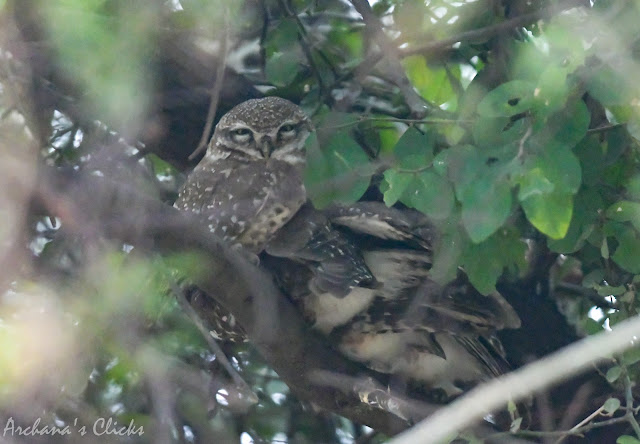





























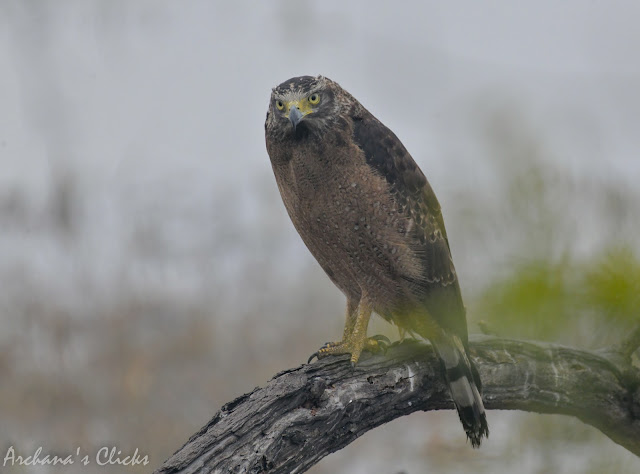






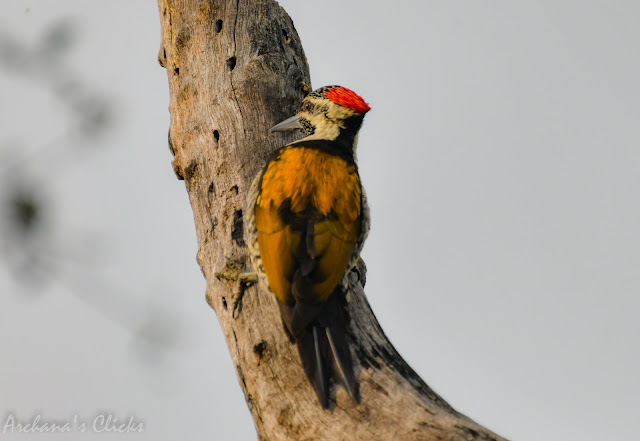
























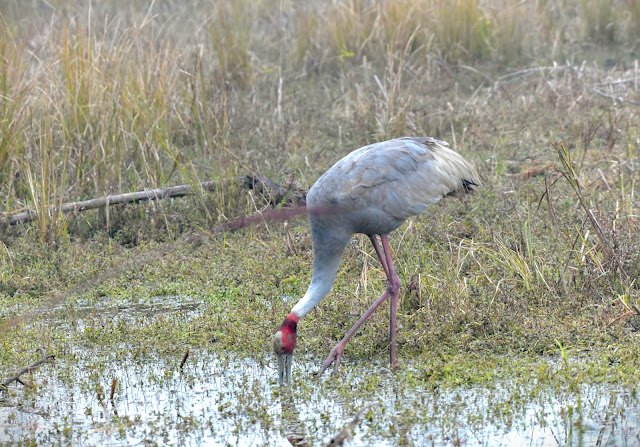





























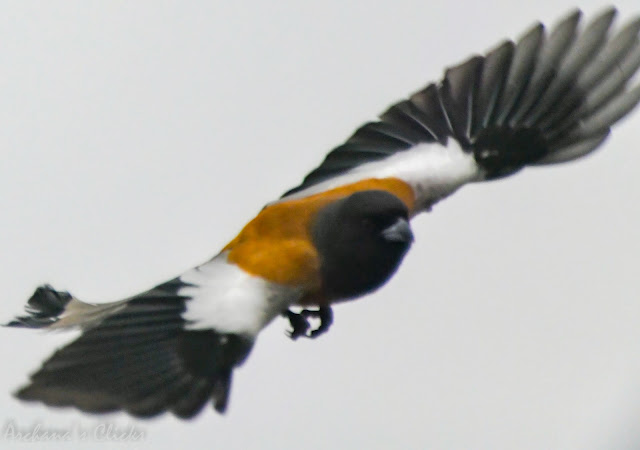
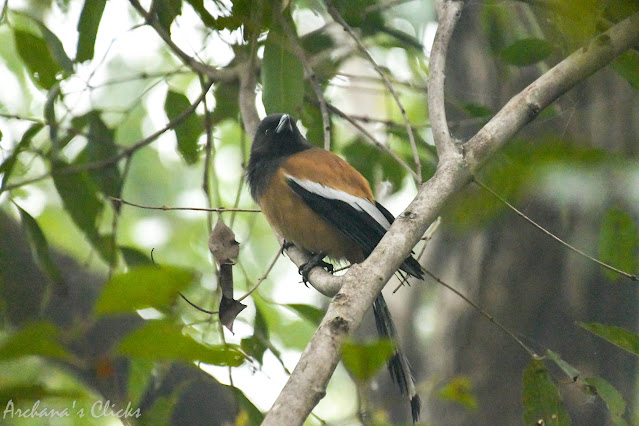


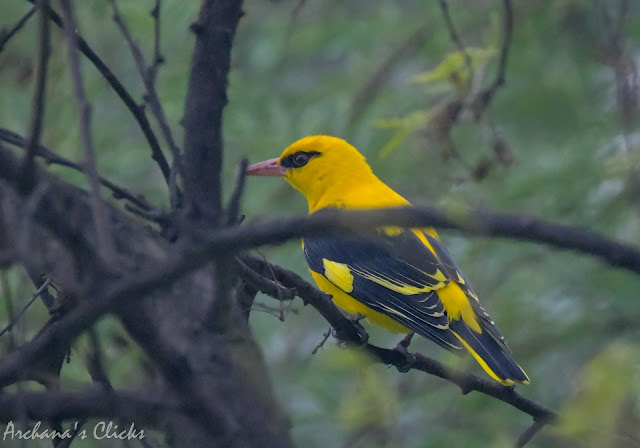









































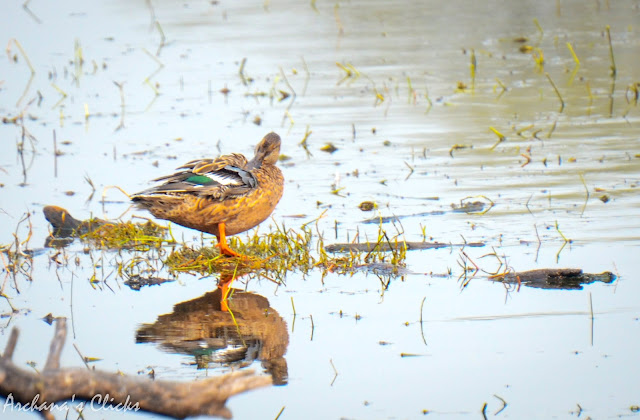
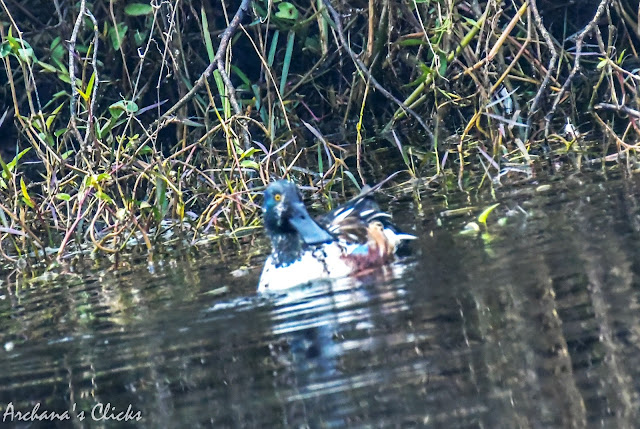




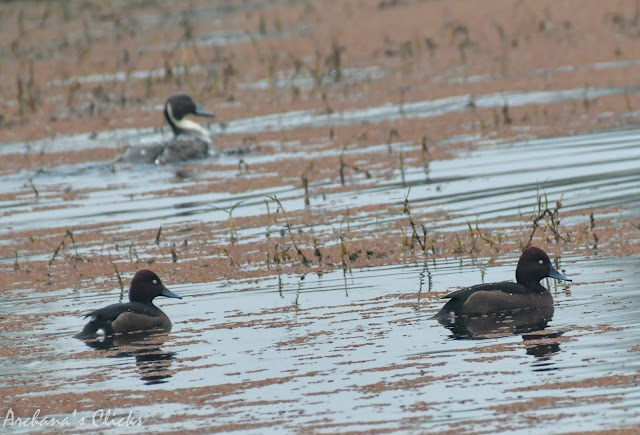




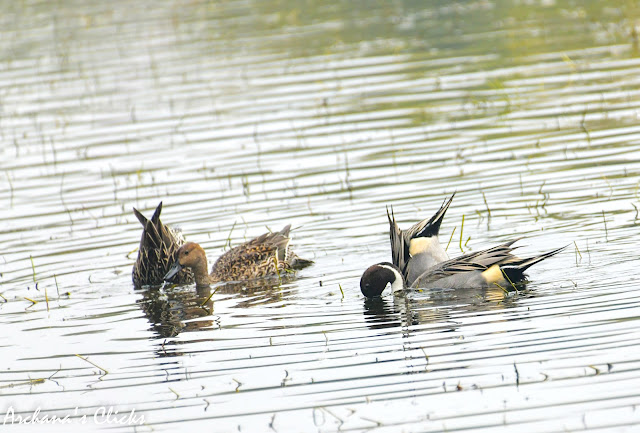








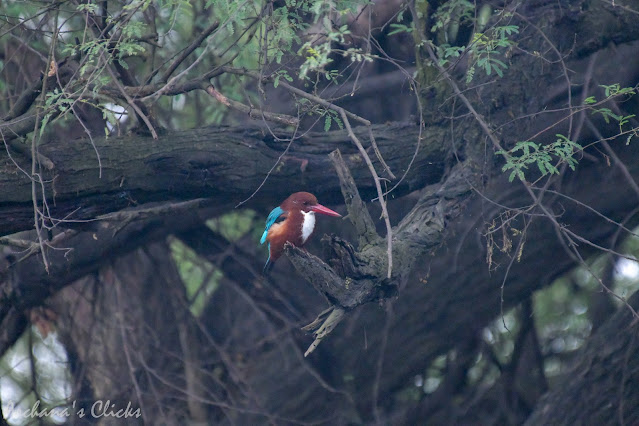










.JPG)





























Comments